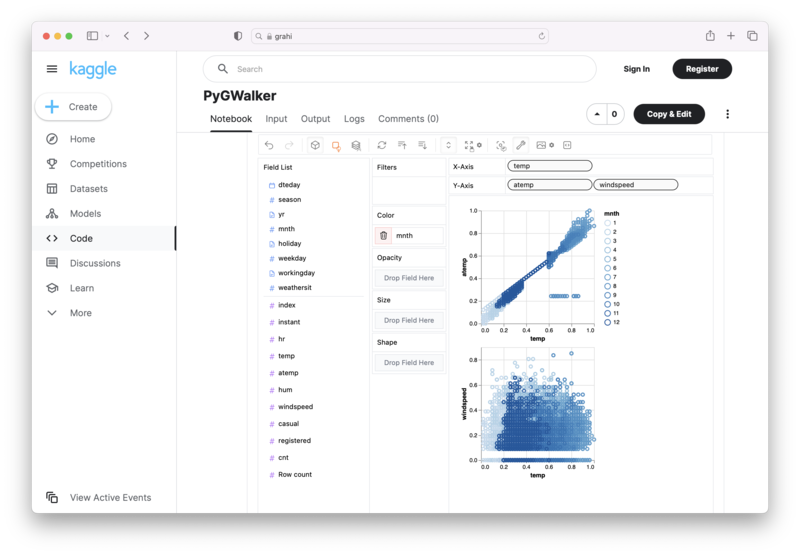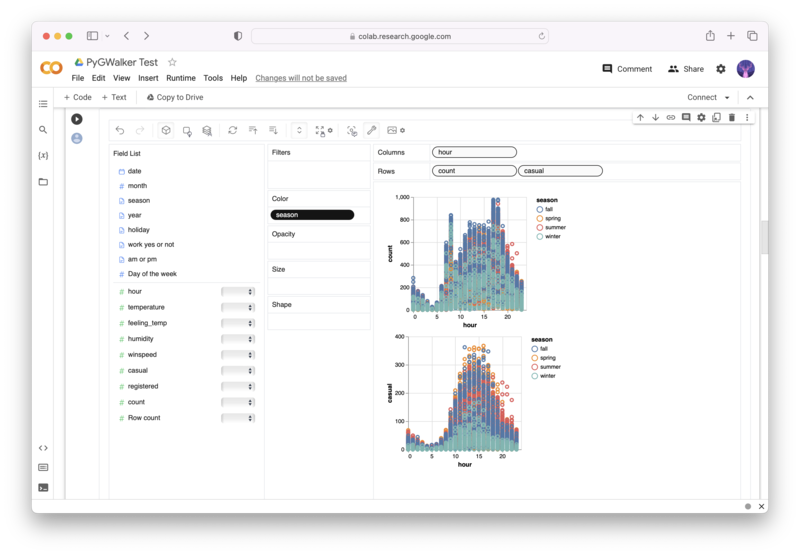A Comprehensive Guide: How to Use Pandas to_datetime for Data Processing
Published on
One of the most robust Python libraries for data analysis and manipulation is Pandas. A versatile function within Pandas that significantly aids in time series analysis is the to_datetime() function. In this guide, we will delve into how you can use the Pandas to_datetime() function to convert your date data effectively.
Want to quickly create Data Visualizations in Python?
PyGWalker is an Open Source Python Project that can help speed up the data analysis and visualization workflow directly within a Jupyter Notebook-based environments.
PyGWalker (opens in a new tab) turns your Pandas Dataframe (or Polars Dataframe) into a visual UI where you can drag and drop variables to create graphs with ease. Simply use the following code:
pip install pygwalker
import pygwalker as pyg
gwalker = pyg.walk(df)You can run PyGWalker right now with these online notebooks:
And, don't forget to give us a ⭐️ on GitHub!
Understanding the Pandas to_datetime() Function
Pandas to_datetime() offers a flexible and comprehensive approach to handling date conversions. It efficiently turns a string representation of a date into an actual date format, which comes in handy when leveraging the vast date functionality provided by Pandas, such as resampling.
The syntax for to_datetime() is as follows:
pd.to_datetime(arg, errors='raise', dayfirst=False, yearfirst=False, utc=None, format=None, exact=True, unit=None, infer_datetime_format=False, origin='unix', cache=True)Let's break down the key parameters of this function.
Parameters of to_datetime()
Here are the primary parameters you will interact with when using the to_datetime() function:
-
arg: This is the actual data you wish to convert to a datetime object. It's a flexible parameter that accepts numerous data types such as int, float, string, datetime, list, tuple, Series, DataFrame, or dict. -
format: This parameter instructs Pandas on how to interpret your strings when converting them to DateTime objects. -
origin: The reference date from which you wish to have your timestamps start. By default, it's set to 'unix', which corresponds to 1970-01-01. You can also set your own origin. -
unit: This allows you to specify what unit your integer data represents, relative to the origin. For example, if you pass20203939with unit='s', Pandas will interpret this as 20,203,939 seconds away from the origin. -
dayfirstandyearfirst: These parameters help Pandas parse dates if your day or year comes first in your format, respectively.
DateTime Format Codes
Format codes are essential in instructing Pandas what format your DateTime string is in. Here are a few key format codes:
- %Y: Year with century
- %m: Month number, zero-padded
- %d: Day of month, zero-padded
- %H: Hour (24 hour), zero padded
- %M: Minute, zero-padded
- %S: Second, zero padded
- %f: Microsecond, zero-paddedExamples of Using to_datetime()
Now that we have an understanding of the parameters and format codes let's go through some examples.
Converting a string to a datetime object
import pandas as pd
date_string = '2023-05-30'
date_object = pd.to_datetime(date_string)
print(date_object)Changing the date format using the format parameter
import pandas as pd
date_string = '30-05-2023'
date_object = pd.to_datetime(date_string, format='%d-%m-%Y')
print(date_object)Handling different units of time with the unit parameter
import pandas as pd
seconds_since_epoch = 160945
9200
date_object = pd.to_datetime(seconds_since_epoch, unit='s')
print(date_object)Conclusion
In conclusion, the Pandas to_datetime() function is an indispensable tool in your data analysis toolkit. The flexibility it offers when dealing with dates is invaluable. With this guide, you now have a solid understanding of how to convert and manipulate dates using this function.


